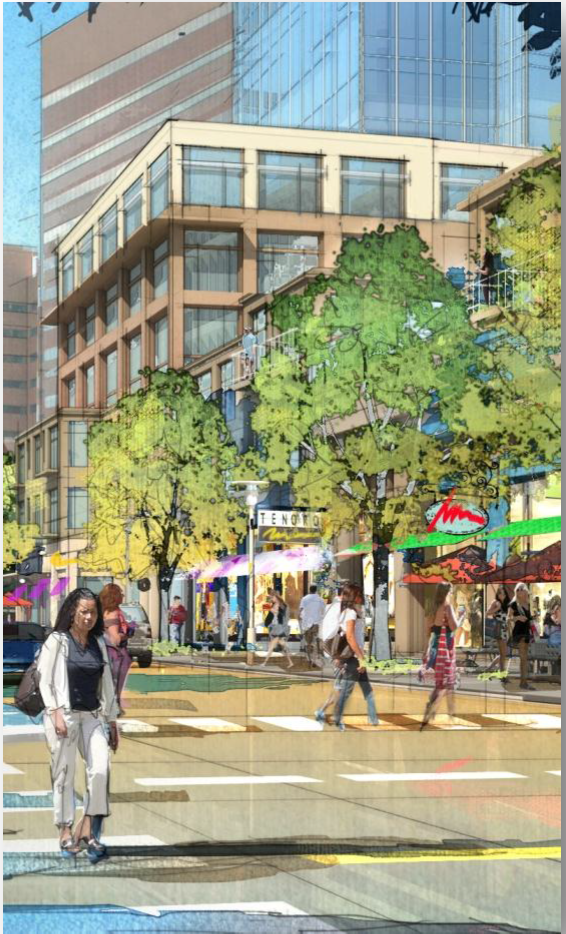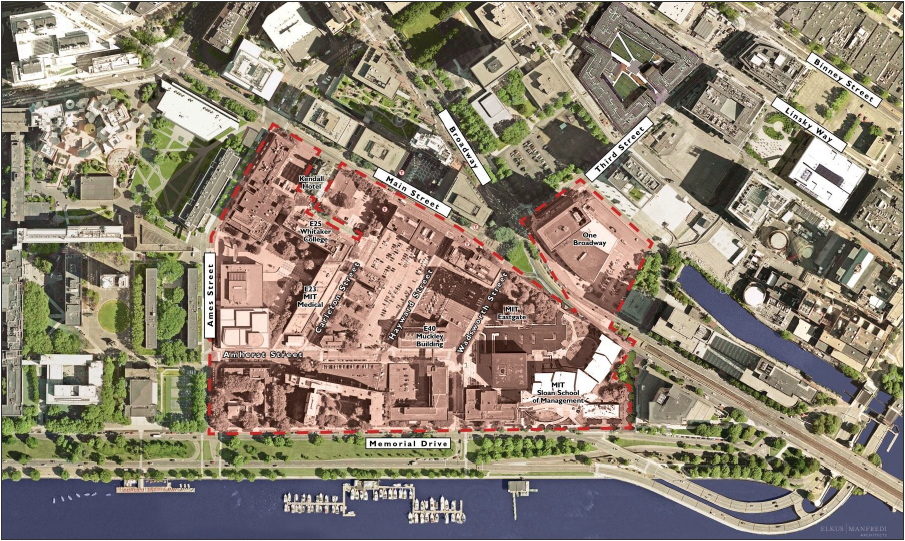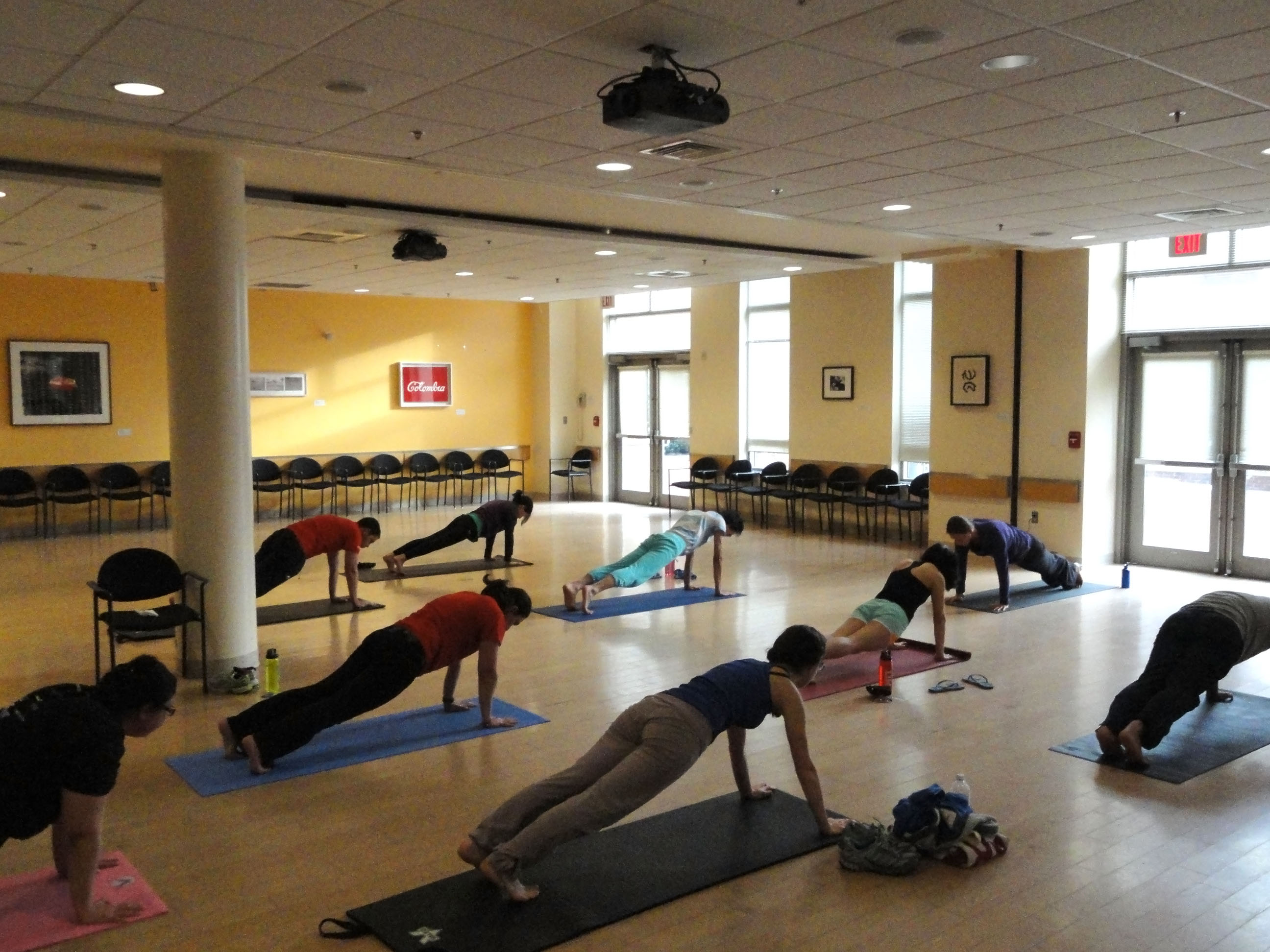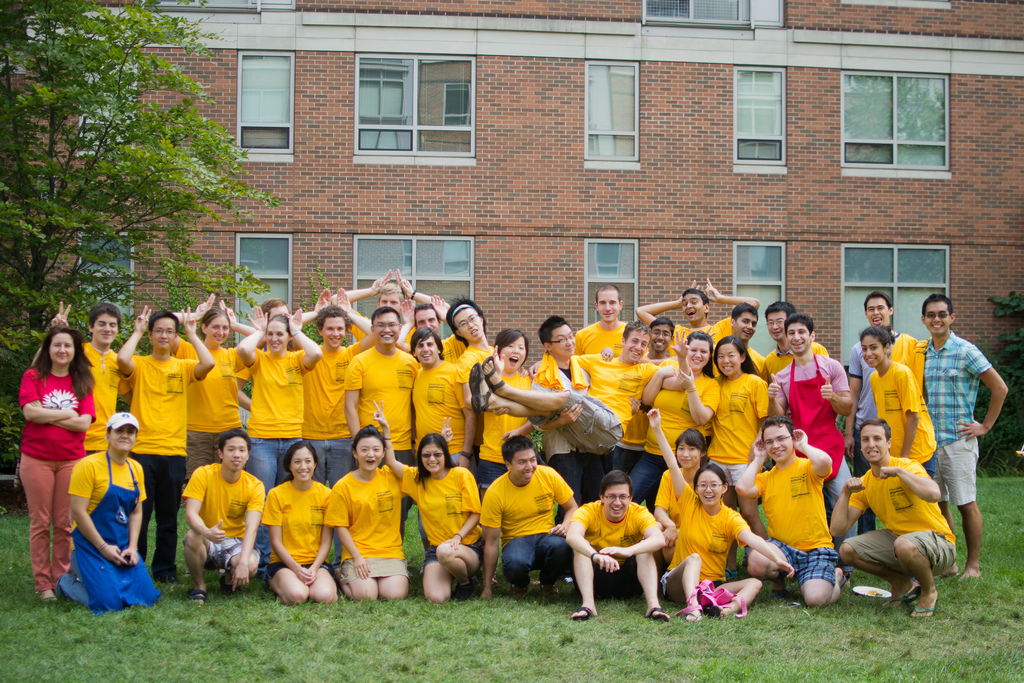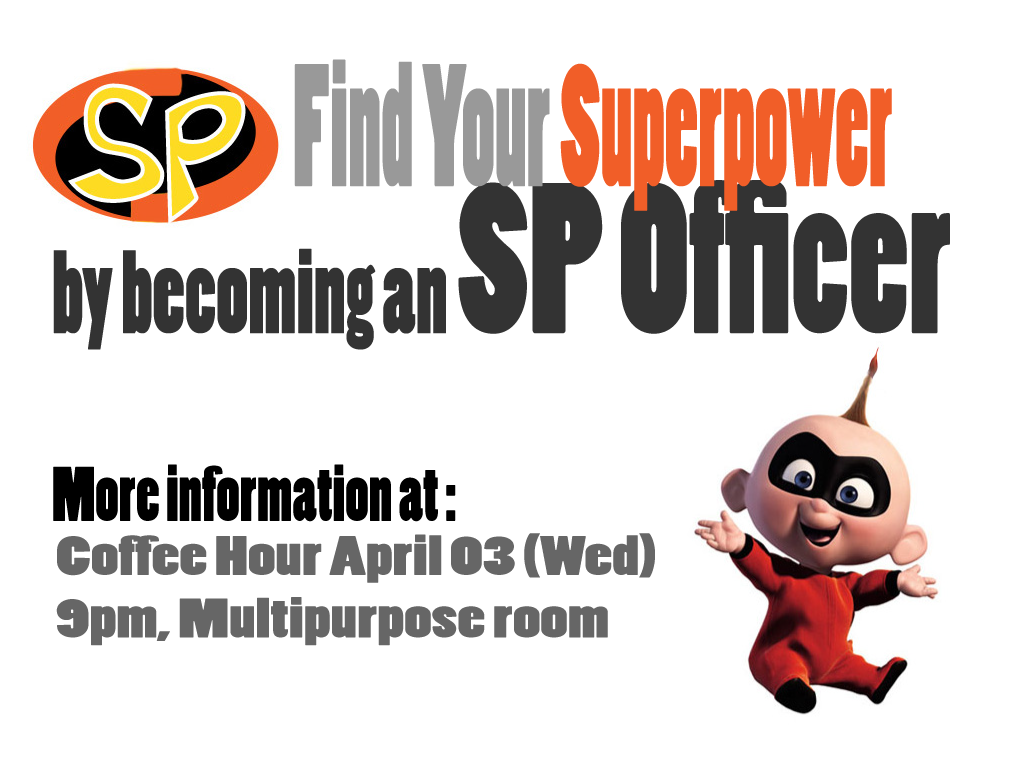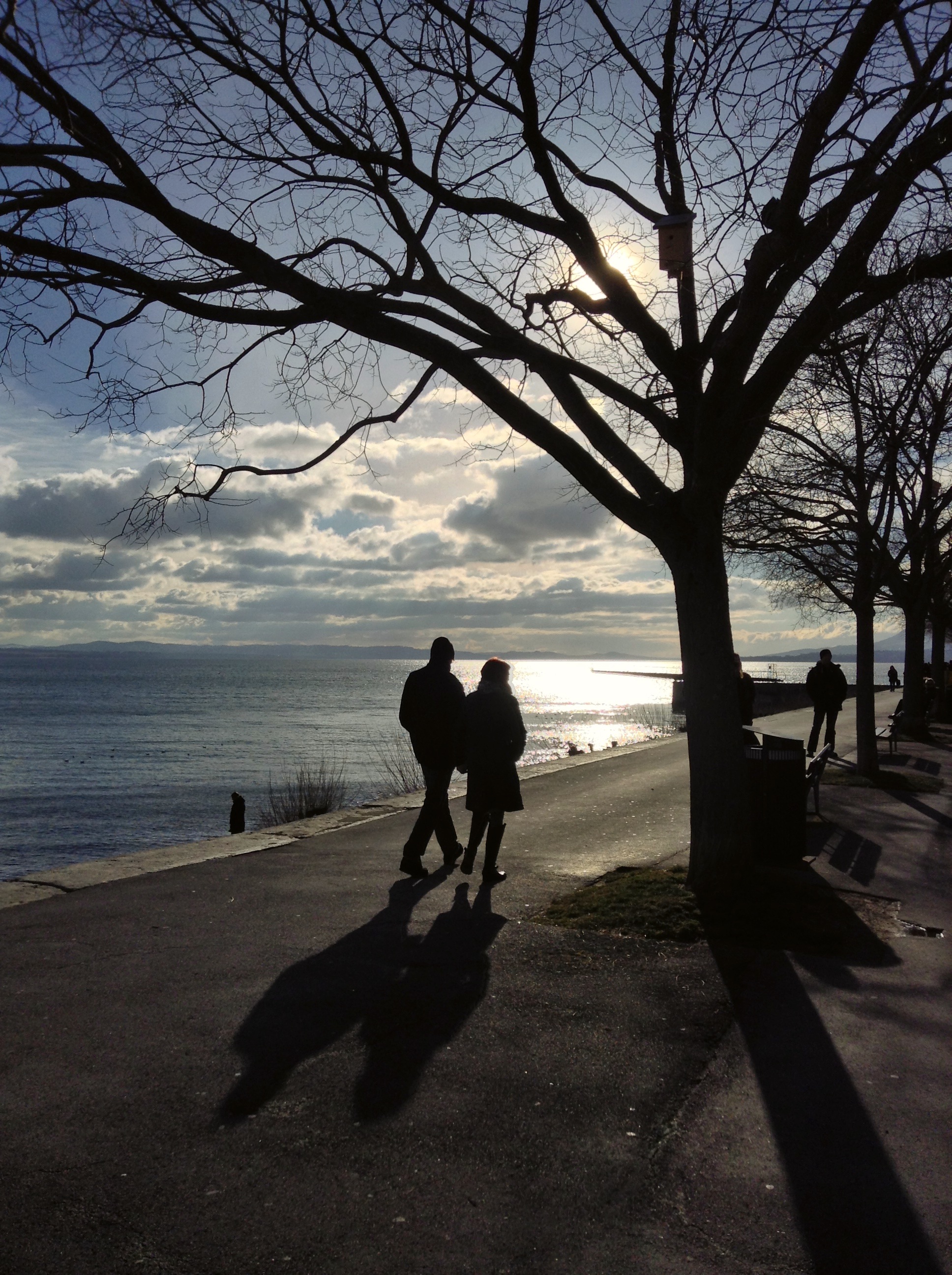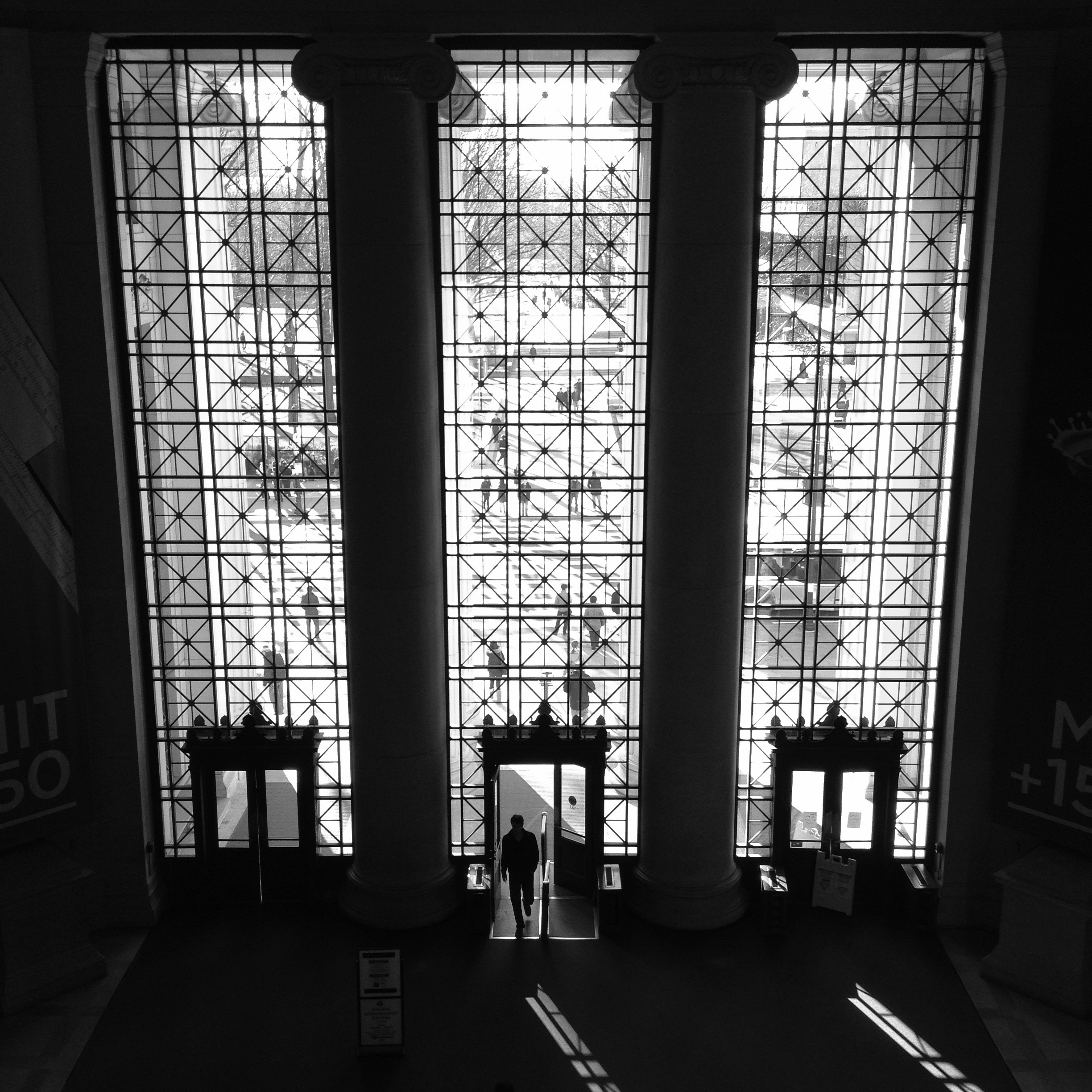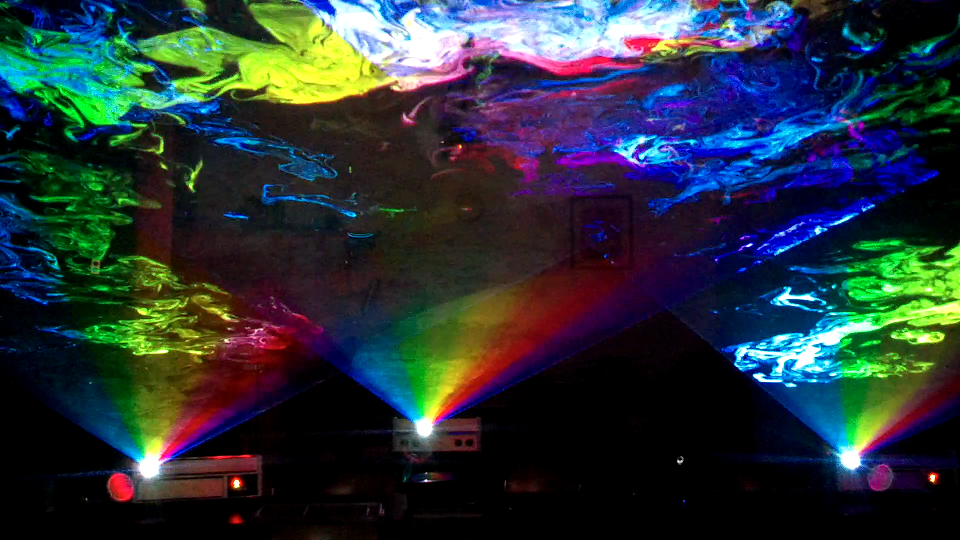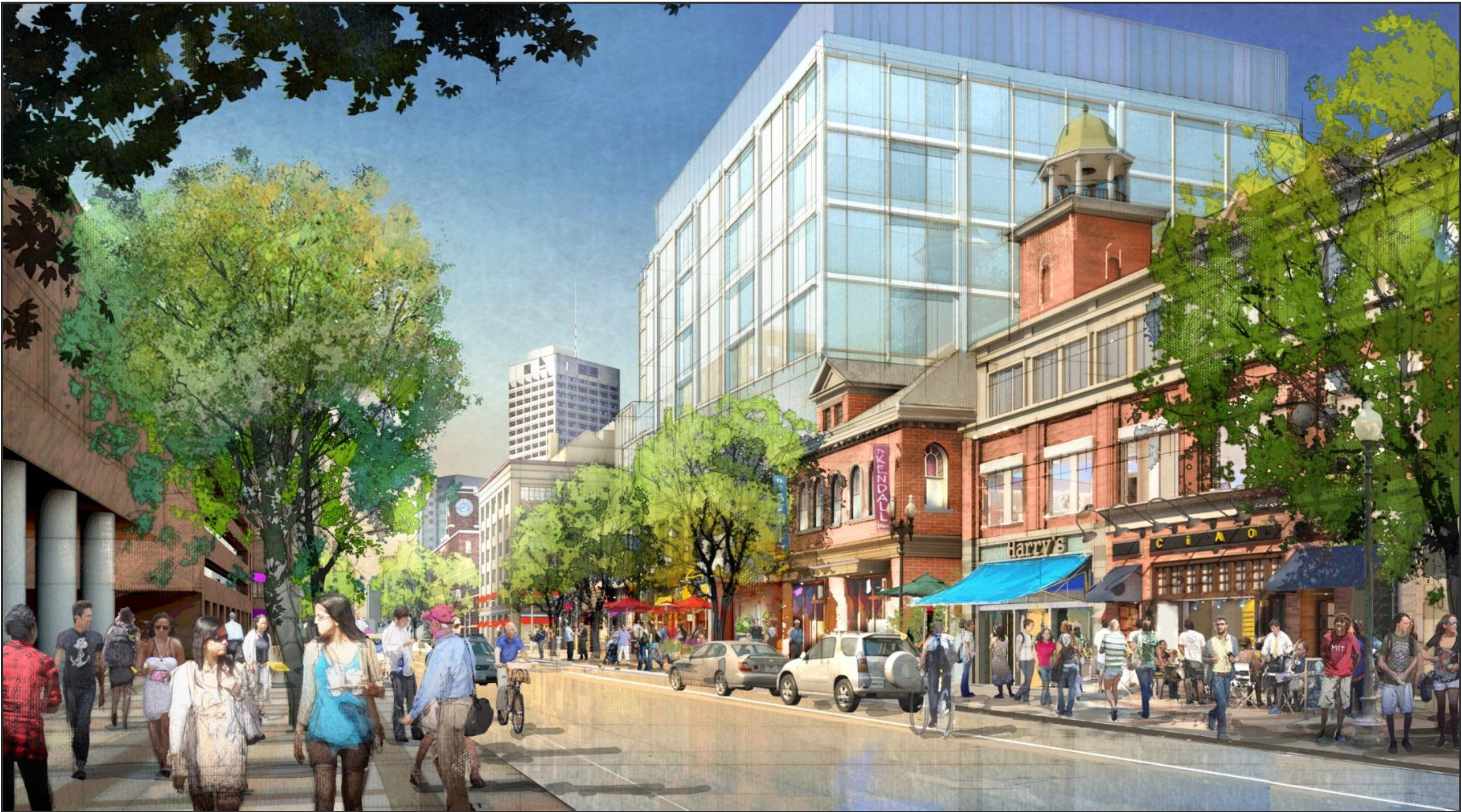
Artist’s rendering of a redeveloped Main Street, as viewed from the intersection with Ames Street. Courtesy of MIT.
Over the last two years, MIT’s leadership have worked to develop a framework, the MIT 2030 plan, to guide the development and stewardship of our physical campus over the next several decades. Though this project will likely take many years to fully realize, certain pressing areas like graduate housing and Kendall Square development are being phased first for action.
MIT has looked into developing some of its real estate portfolio along Main Street in Kendall Square since March 2010 and filed its first petition in the spring of 2011. The city then engaged a year-long community planning process, known as K2 (Kendall Square), to amalgamate the needs and wishes of various stakeholder groups (e.g. neighborhoods, business owners, real estate developers, MIT, etc). During this process, the GSC and faculty grew concerned that the existing petition was deficient in its preservation of academic land and provision of housing. The first reservation was offered chiefly by outspoken faculty that expressed concerns over commercializing MIT’s last remaining undeveloped campus land assets, which were originally allocated for future academic and research expansion space.
The latter point, regarding housing, was initialized by the GSC Housing and Community Affairs committee as a result of nearly two years of quantitative analysis of the surrounding housing markets. According to the GSC’s data, the Cambridge off-campus housing market was experiencing record low vacancy rates, booming rental prices, and a yearly influx of additional high-wage earners seeking housing. The concern, as articulated in an article in the Faculty Newsletter, was that there was already a housing crisis and that further unchecked development would result in neighborhoods that were too expensive and competitive for graduate students to viably access. This, in turn, would result in a diffusion of the off-campus community into more distant neighborhoods that would impact the way we do research and live. In order to better understand the needs of MIT’s community, the article then called for the creation of a student-faculty-administrative working group to “propose a vision for off-campus communities and outline actions to guide us in this uncertain and unkind market”.
In response to these concerns, MIT Leadership commissioned a 2030 Faculty Task Force to evaluate the existing petition and make recommendations on next steps. The Task Force’s report made several recommendations, among them that MIT should indeed create a committee that looked at areas similar to what the GSC’s Faculty Newsletter article called for. The Task Force also gave the go-ahead for upzoning given a number of conditions were met prior to refiling the petition. MIT has since refilled and is now in the final stages of getting approval to rezone various parts of Kendall Square both commercially and residentially.
Although the proposed rezoning envisions some of the largest and most exciting changes to east campus in several decades, few students knew much about the project and even fewer harbored opinions. As a result, the Undergraduate Association, Graduate Student Council, and Postdoctoral Association decided to jointly co-host the first Institute-wide forum on Kendall Redevelopment to achieve the following three goals:
1. Allow students to hear the specifics of the MIT proposal directly from the MIT staff that wrote it.
2. Allow students to hear a diversity of opinion from MIT community members educated in the proposal.
3. Provide an initial venue for soliciting student feedback on the project.
In addition to being the first joint forum between undergraduates, graduates, and postdoctoral researchers, it also broke attendance expectations and forced the use of an overflow room. In attendance were approximately 140 graduate students, 50 undergraduates, 10 postdoctoral researchers, 10 faculty, and 10 administrators. Time was divided evenly amongst the pro, neutral, and against sides of the argument, and students were allowed to form their own judgments based on the discussions from the evening.
Below are the three most common sentiments for and sentiments against the petition, in order of decreasing precedence:
Sentiments For:
1. It helps MIT’s finances and grows our endowment: Students respect the critical importance of maintaining and growing our endowment, especially in the current sequestration climate. They understand that a healthy endowment is the principal enabler of the Institute’s support of its community.
2. It improves the eastern portion of campus and creates a gateway: Students desperately want to see something done to improve the landscape of the Kendall Square, add a grocery and pharmacy, and create a respectable entrance that better welcomes guests as well as links Sloan to main campus.
3. It creates an innovation center in Kendall and next to MIT: Many students appreciate the benefits of increasing the number of employers in the area and value of entrepreneurial activity though want to avoid what happened in University Park.
Sentiments Against:
1. This may significantly impact the housing market: Students feel concerned and helpless. In order to perform their job at the levels they are expected and the hours that are needed, losing viable near-campus housing options is very intimidating.
2. On-Campus corporate offices may interfere with the academic atmosphere: Students are uncomfortable with the apparent abasement of MIT’s culture and mission by selling potential academic land to corporations.
3. It limits the opportunities of MIT for expansion: This was a concern rooted mostly in the ability to find and grow lab space.
The vote on the MIT petition will take place in early April and likely shape the face and future of Kendall Square for many generations to come. If you’re interested to learn more or want to share your thoughts on the topic please do reach out and contact us at gsc-officers@mit.edu.
By Brian Spatacco (GSC President)

